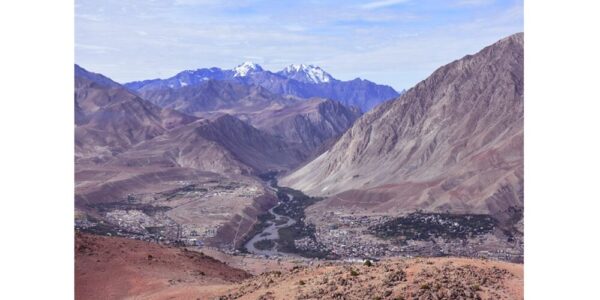Vision Document 2047 of LAHDC Kargil: An Optimistic Blueprint for self- reliance
The initiative of the Vision 2047 document of the Ladakh Autonomous Hill Development Council (LAHDC) Kargil reflects the high and optimistic vision and brainchild of Dr. Akhone Jaffer Sahib, the esteemed Hon’ble Chief Executive Councillor (CEC) of the 5th LAHDC Kargil. This marks a historic moment as it is the first time in LAHDC’s history that a comprehensive vision document is going to draft under the dynamic leadership of Dr. Sahib. The five-year vision document should also be drafted at the first meeting of the newly formed council for its five-year tenure, aimed at completing projects within a prescribed timeframe. This holistic vision document seeks to cover all sectors of Kargil’s sustainable economy, and by extension, the entire region of Ladakh.
I wish all stakeholders to align their visions with the goals of a sustainable economy, self-reliance, and self-sufficiency. It is essential for the essence of LAHDC. Currently, Ladakh in general, and Kargil in particular, dependency on external resources is a significant concern. Our primary economic sector is deteriorating, and traditional farming practices are on the verge of collapse. Modern techniques are not being effectively utilized, leading to villages transforming into deserts, and households increasingly relying on packaged milk.
The LAHDC and the UT administration must prioritize revitalizing the primary sector to ultimately sustain the secondary and tertiary economies, along with the environment. Unfortunately, in the name of development and construction, thousands of trees have been felled, and vast areas of green, agricultural, and grazing land have been converted into concrete jungles. This exacerbates the impact of climate change and global warming on Kargil and Ladakh.
* Click to Follow Voice of Ladakh on WhatsApp *
The effects of climate change on Ladakh are undeniable. The Himalayan glaciers, particularly the Kargil Parkachik glaciers, are melting at an accelerated rate, and over the past decade, the region has experienced significantly lower snowfall and rainfall. Consequently, many villages in Kargil suffer from severe water scarcity, with dried-up streams/nallahs and small forests. This leads to a dire need for modern irrigation techniques to fully irrigate Kargil. By doing so, agricultural, horticultural, and forest lands can flourish, resulting in increased production of grains, fruits, vegetables, and wood. Enhanced agricultural output will encourage livestock farming, thereby boosting dairy production and market availability.
Reviving agriculture and promoting organic products will not only save our villages and economy but also improve the health of the people. The production of our own organic grains, vegetables, fruits, meat, dairy products, and poultry will also boost the tourism sector, as restaurants and hotels can serve organic food to both domestic and foreign tourists.
Everyone is well aware, and no one can deny this fact, that the urban population is increasing day by day, while only 20% of the total population lives in rural/village areas despite the lack of basic amenities. The reason for this shift is primarily economic; the production of agriculture and livestock is low compared to earlier times, and the problems of irrigating their fields are a big concern. At the end, I requested the LAHDC Kargil to pass a resolution making it compulsory for every household in Kargil, Ladakh, to plant 10 trees in every year.
Therefore, the overarching theme of the Vision 2047 document should centre on creating a self-reliant and self-sufficient Ladakh. By embracing sustainable practices and modern techniques, we can secure a prosperous future for Kargil and the greater Ladakh region.
Disclaimer: The opinions expressed in this article are those of the author and do not necessarily reflect the views of Voice of Ladakh, its editorial team, or its affiliated organizations.



0 Comments